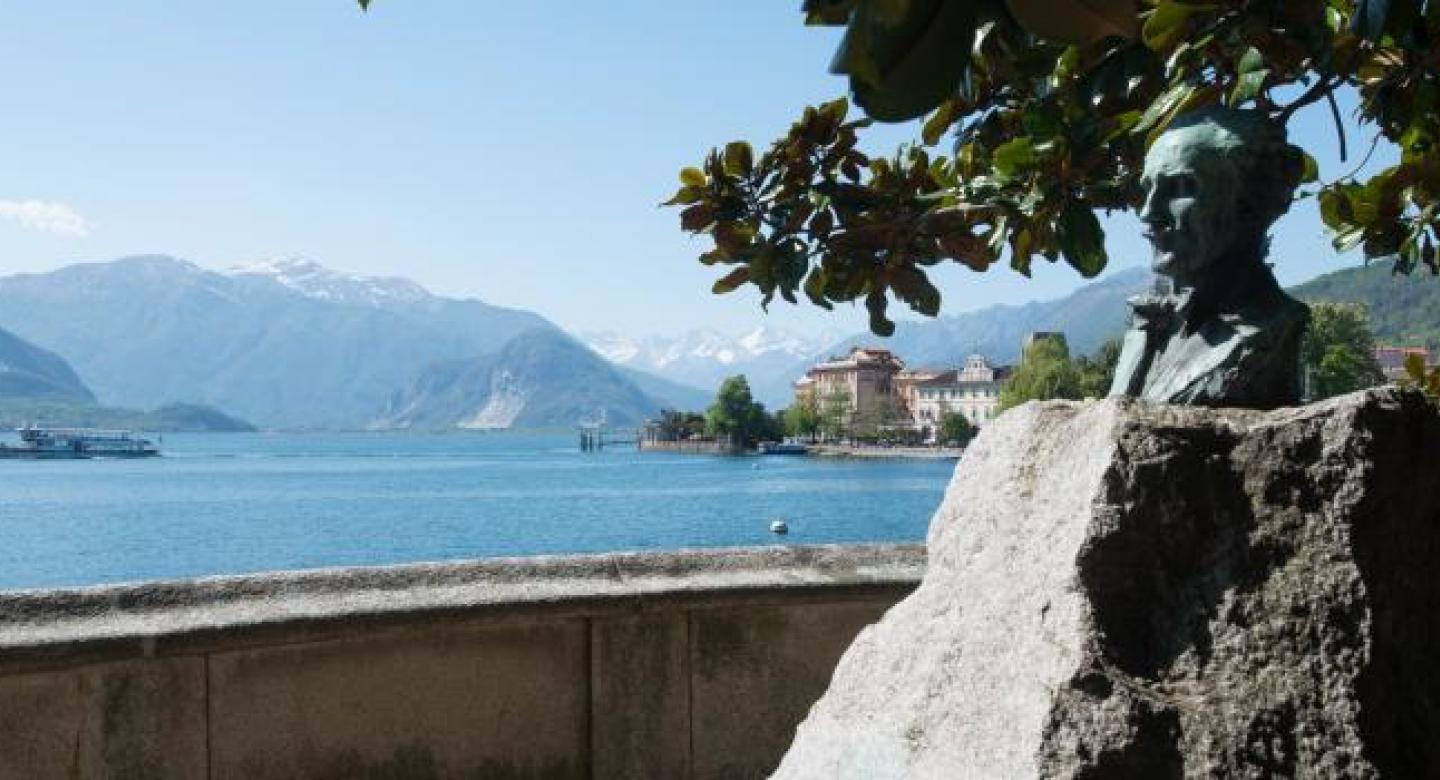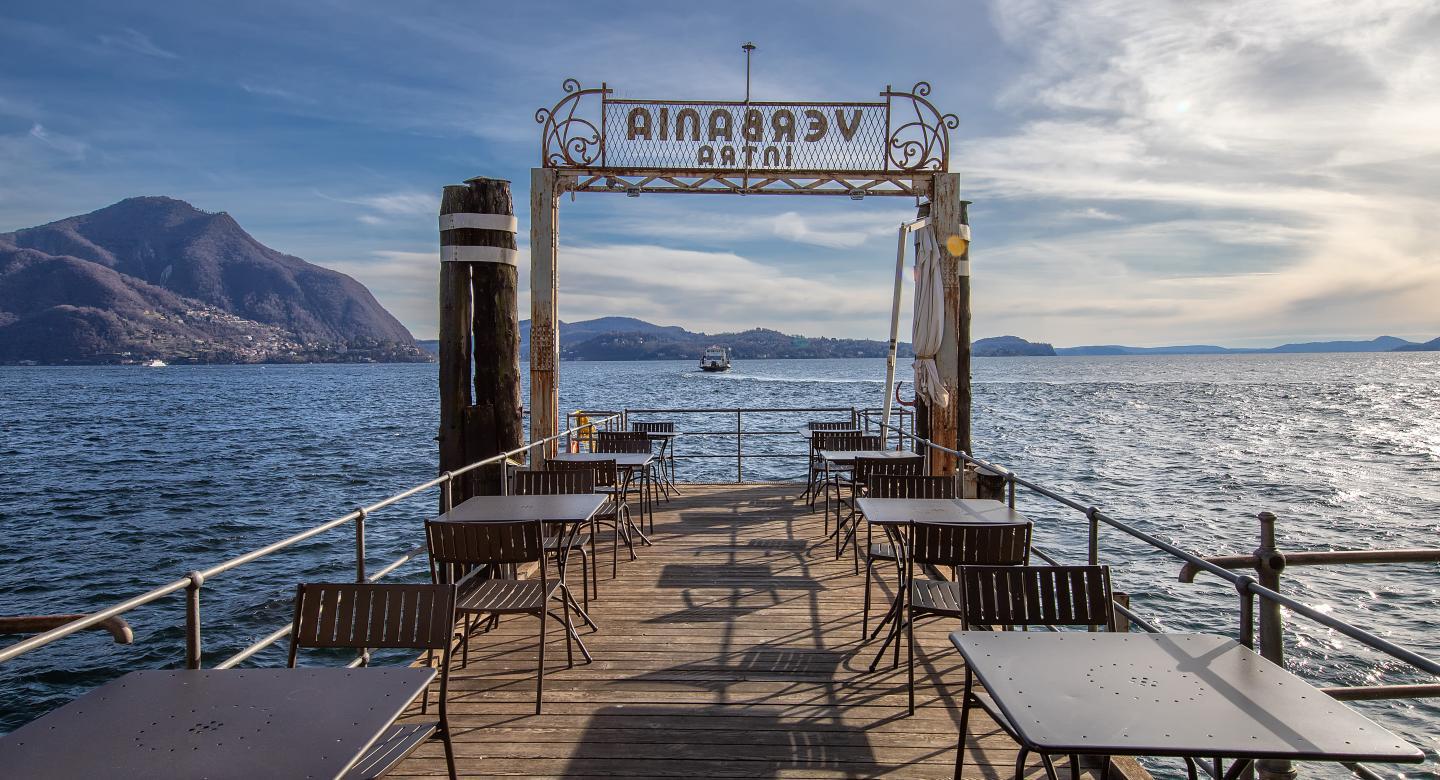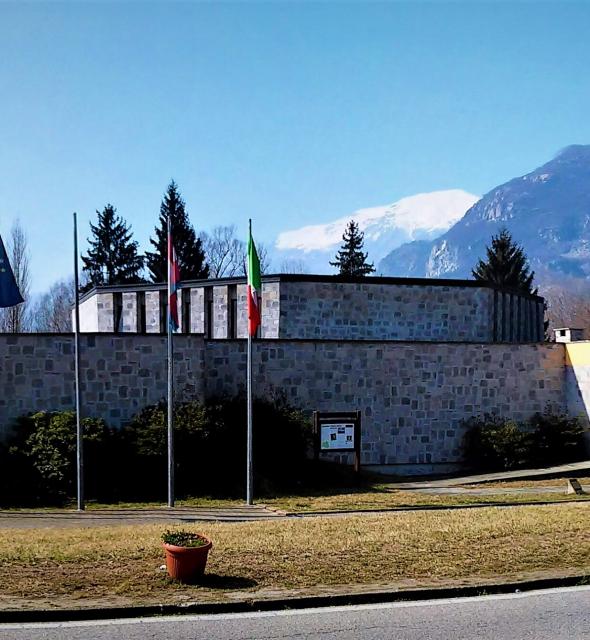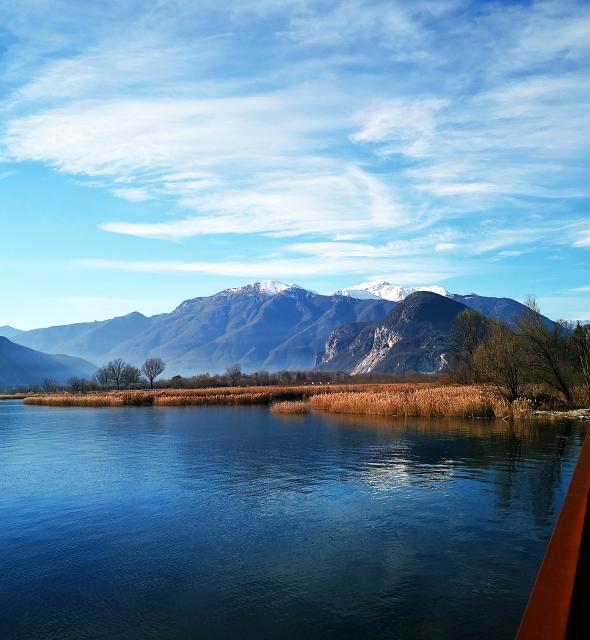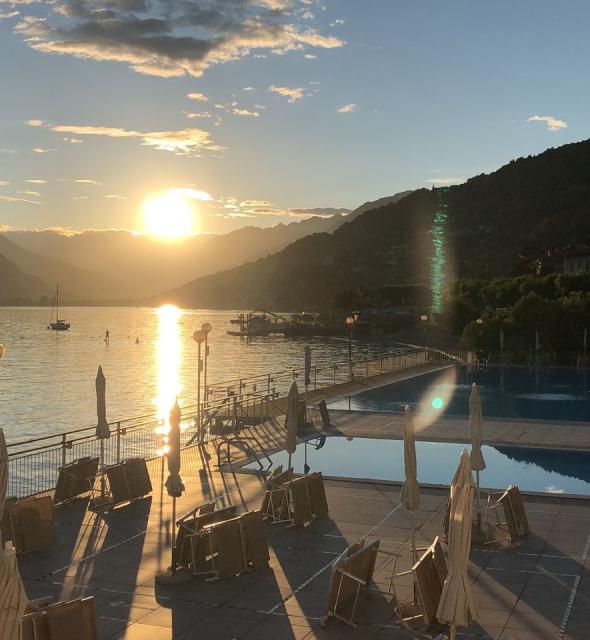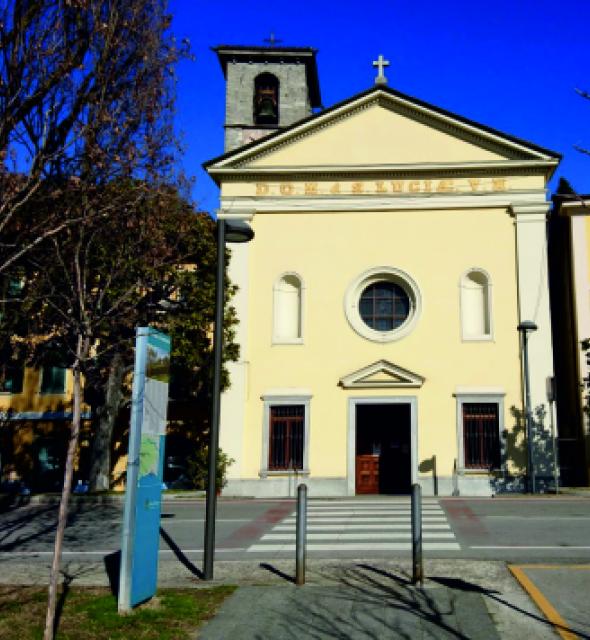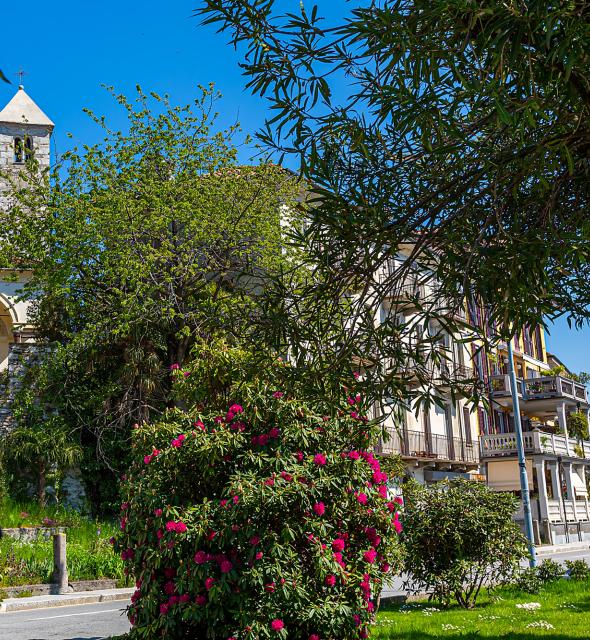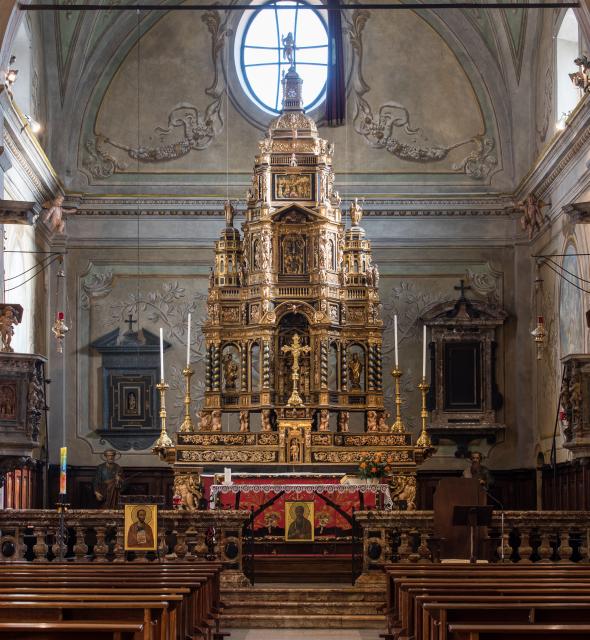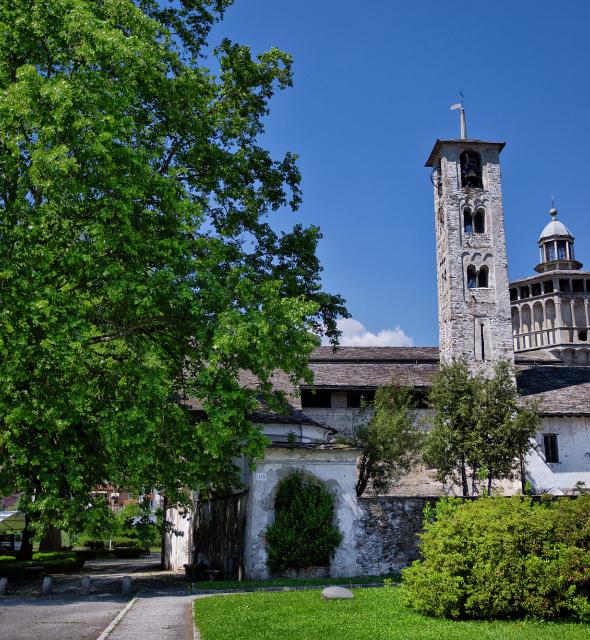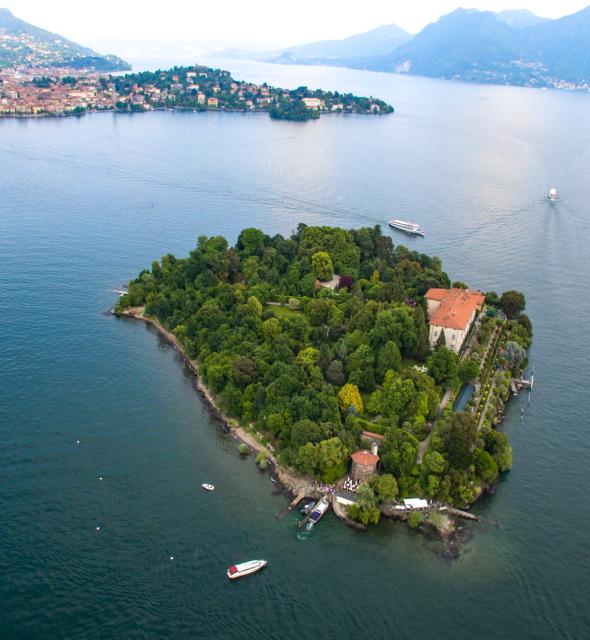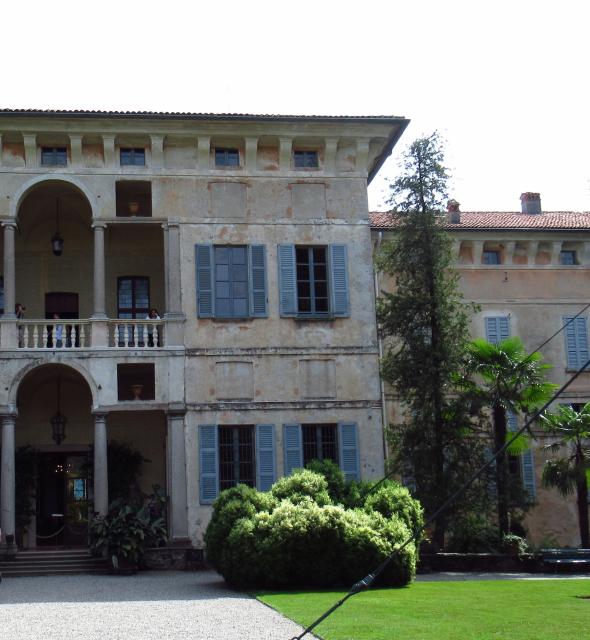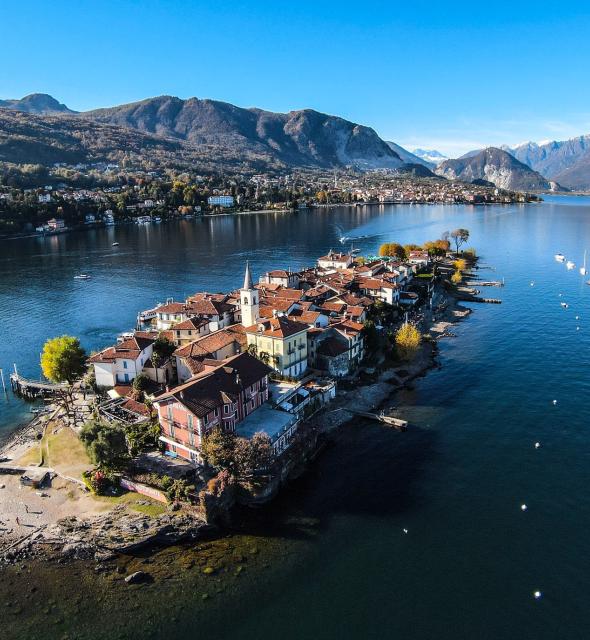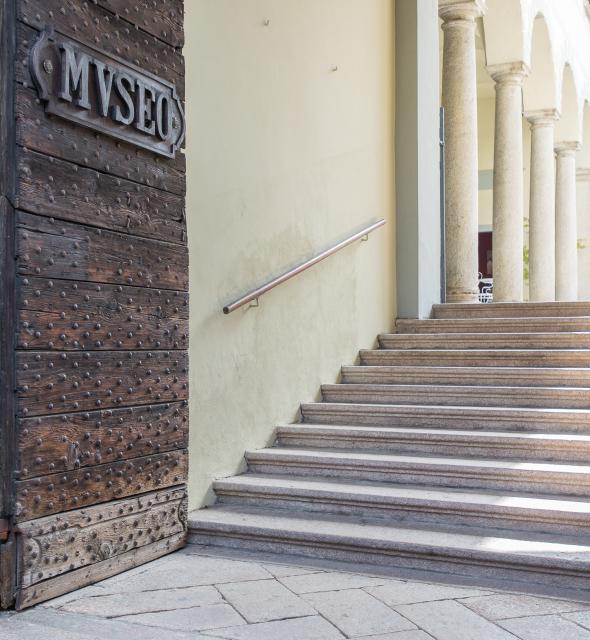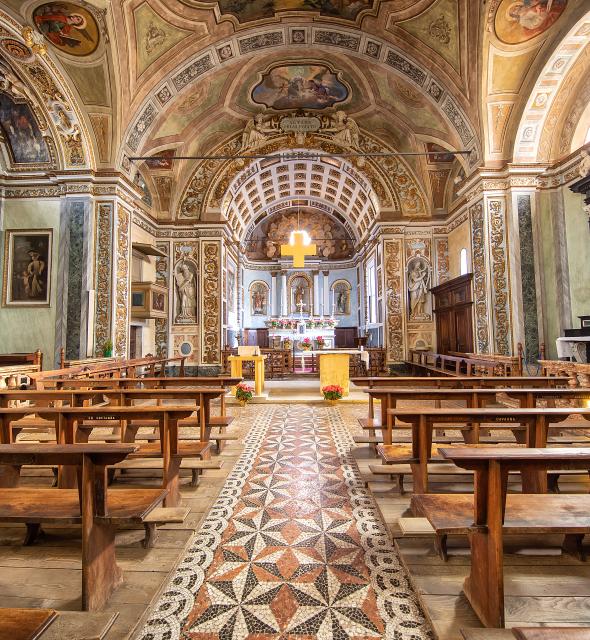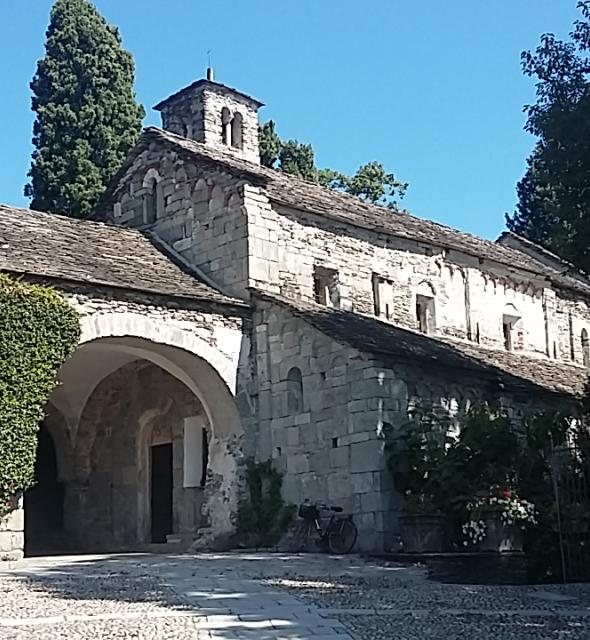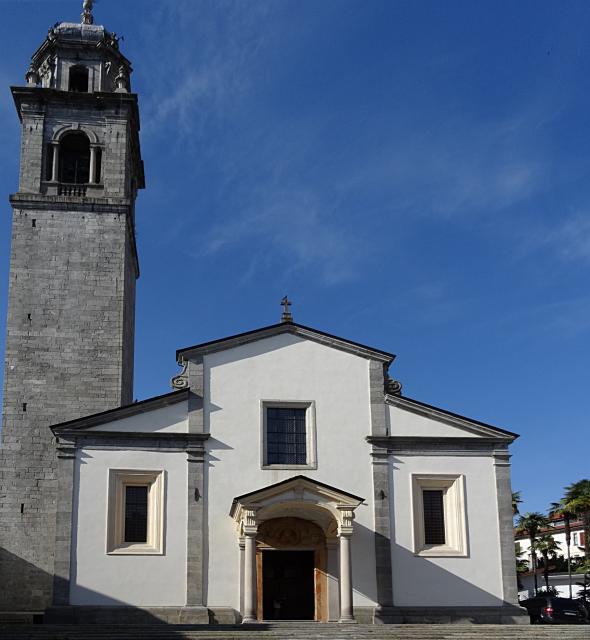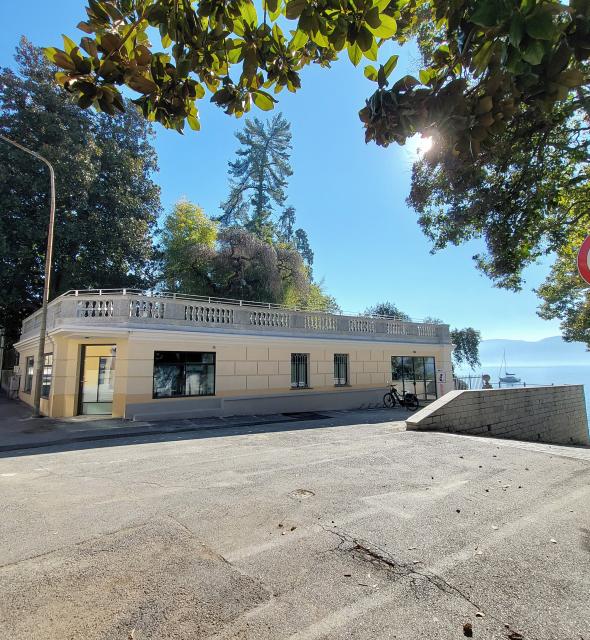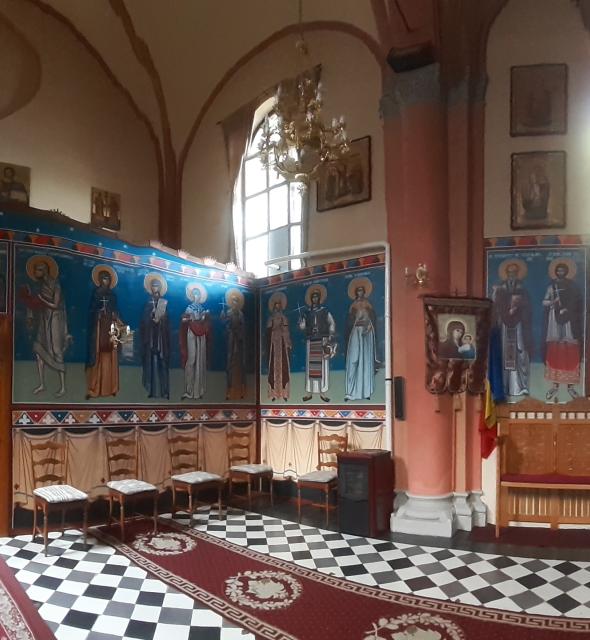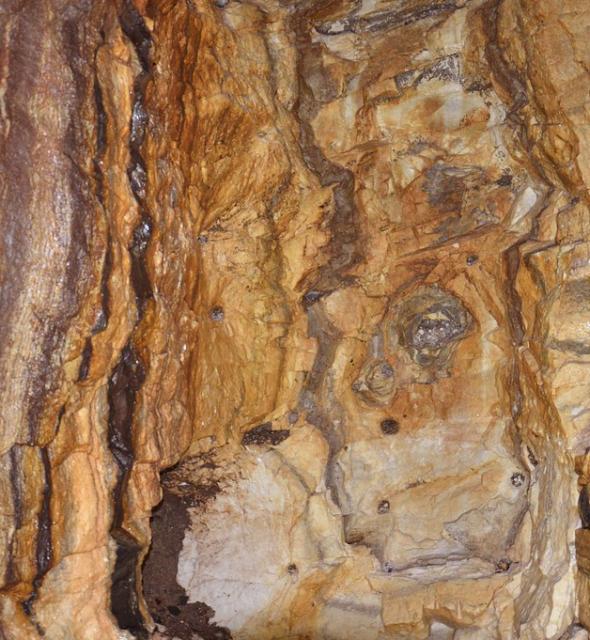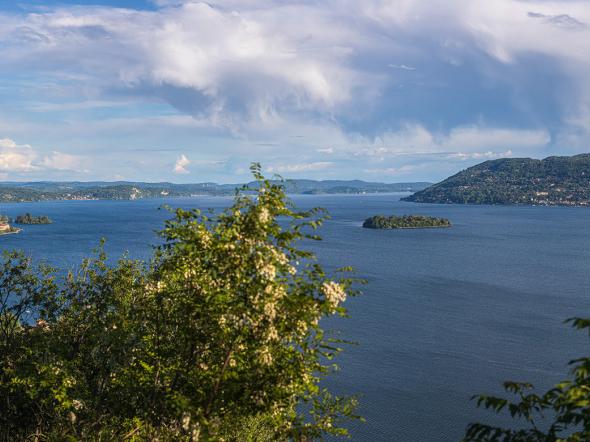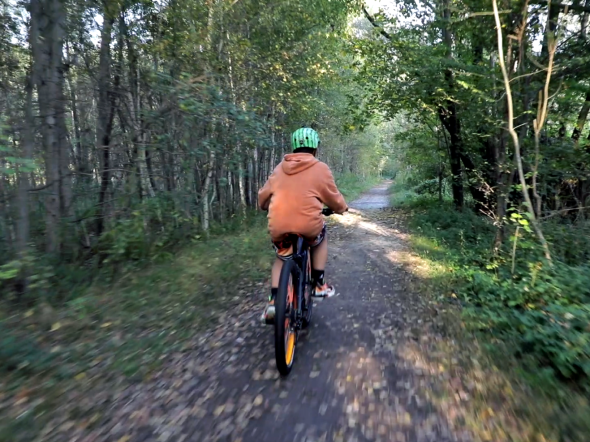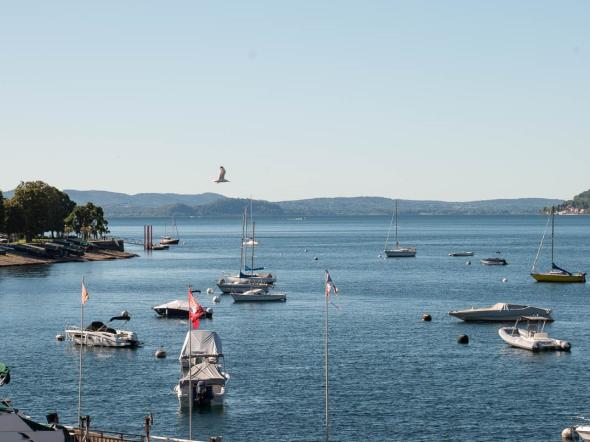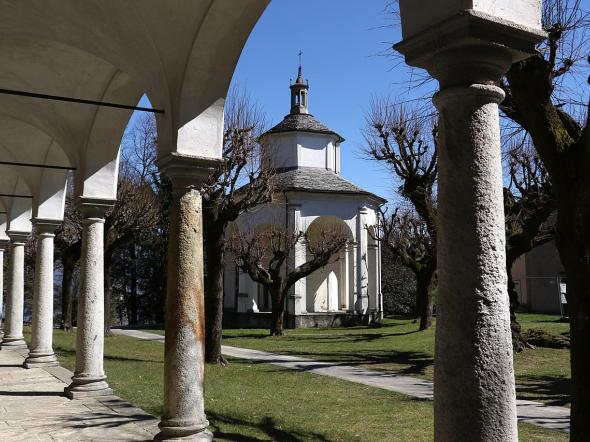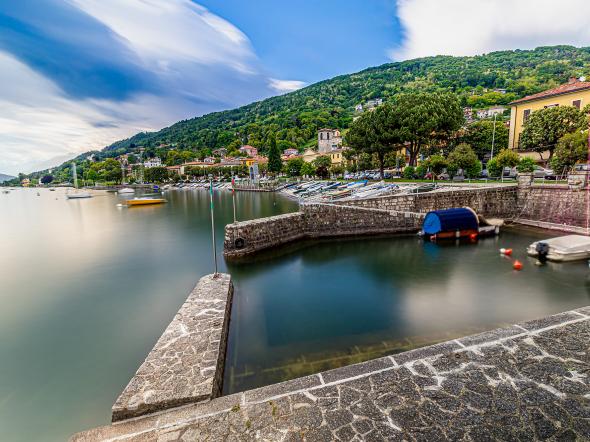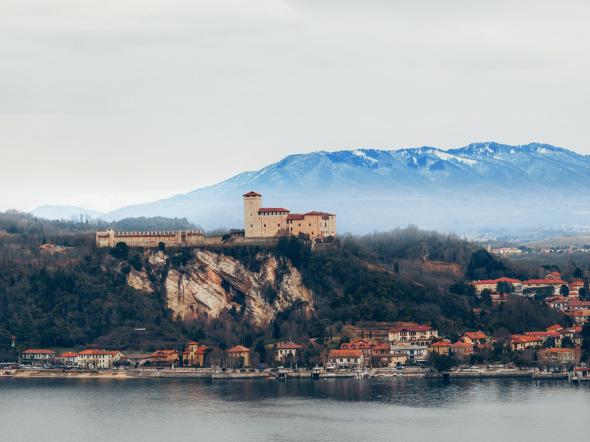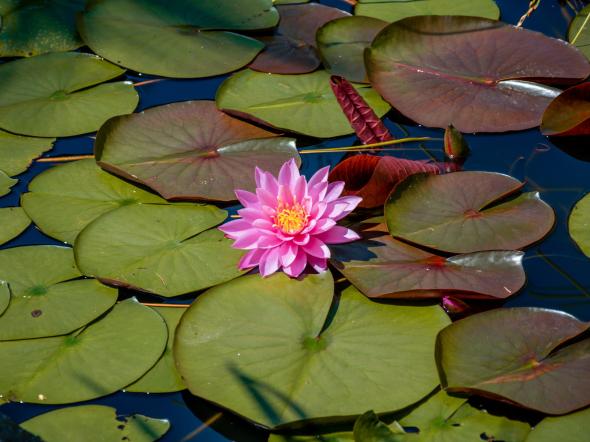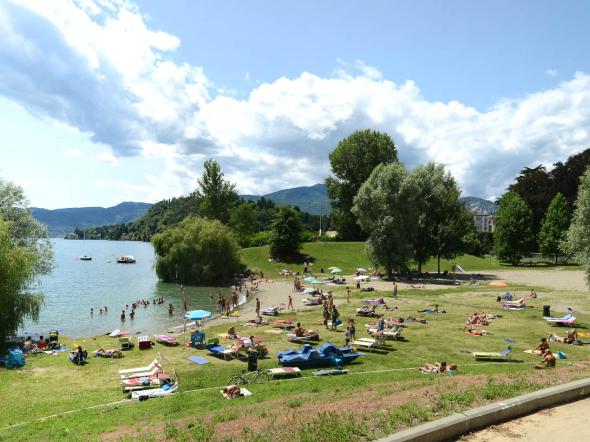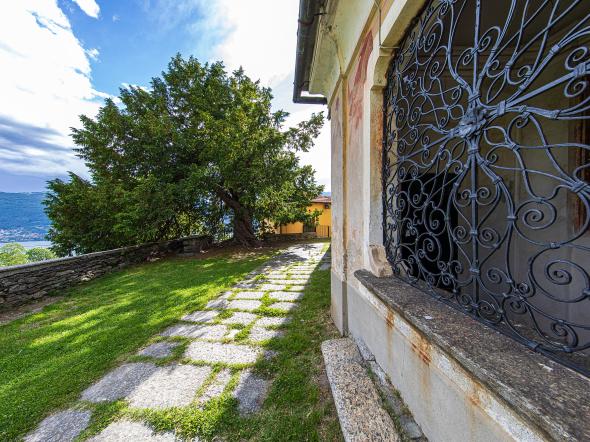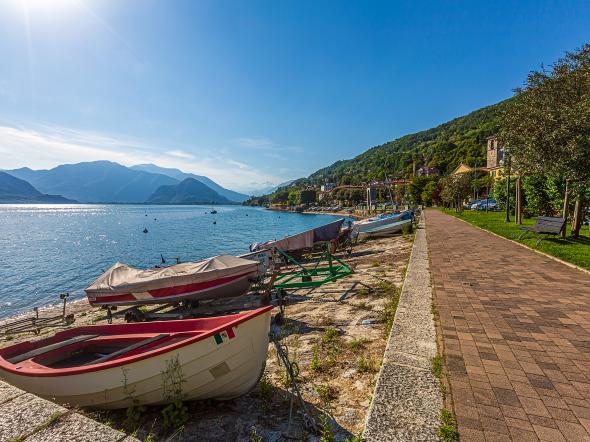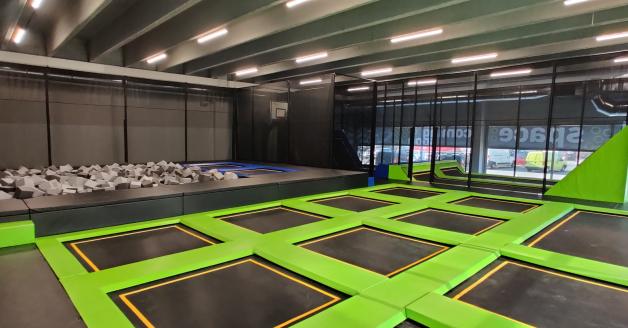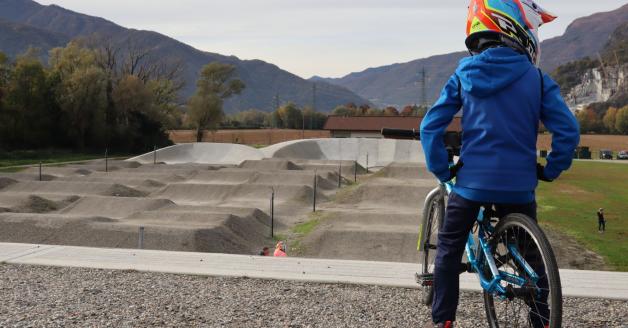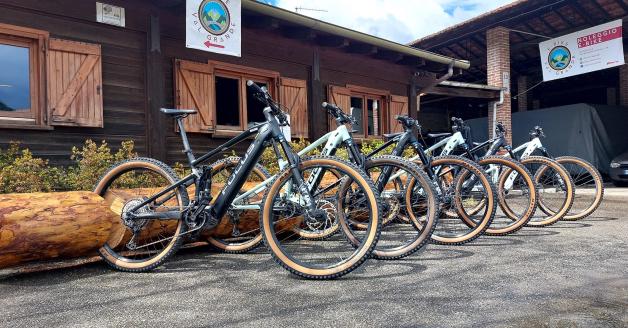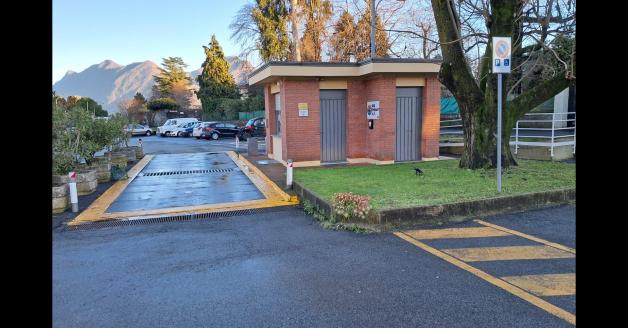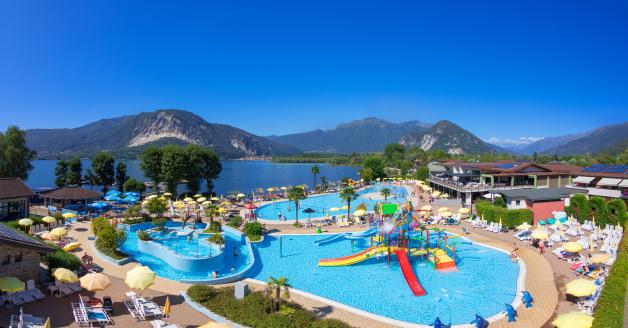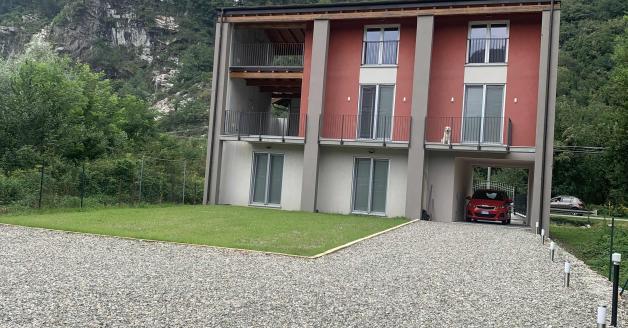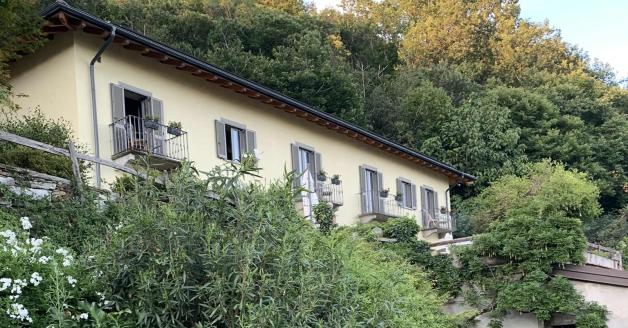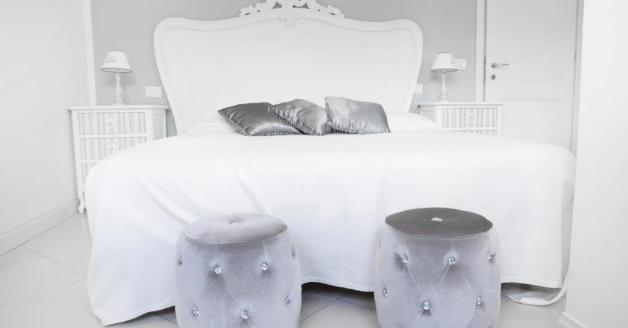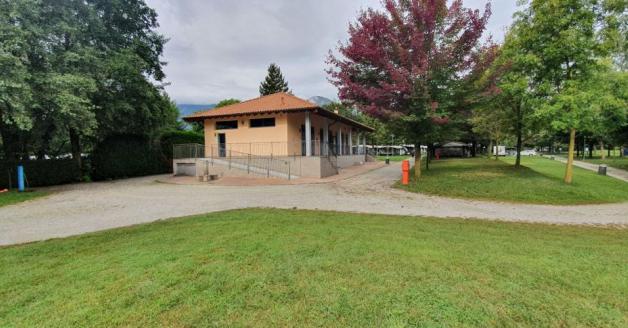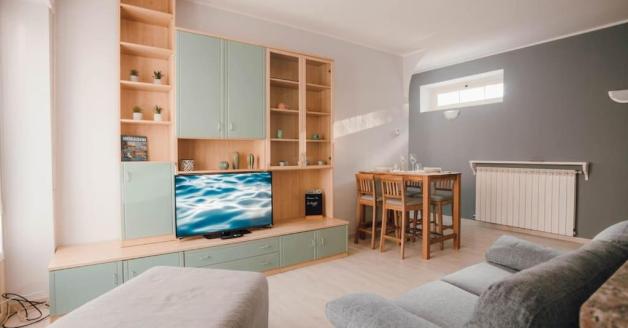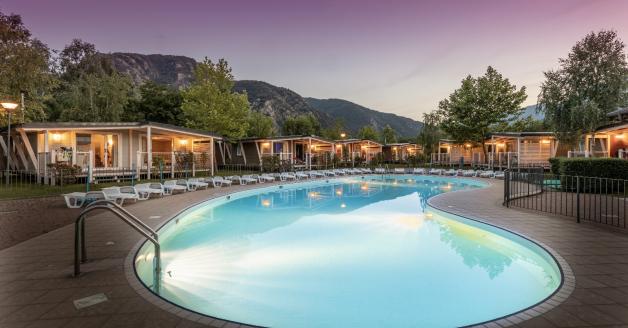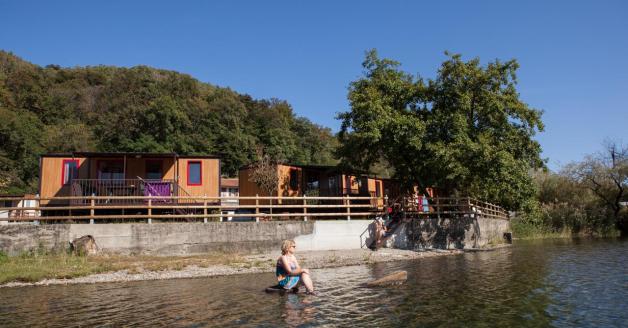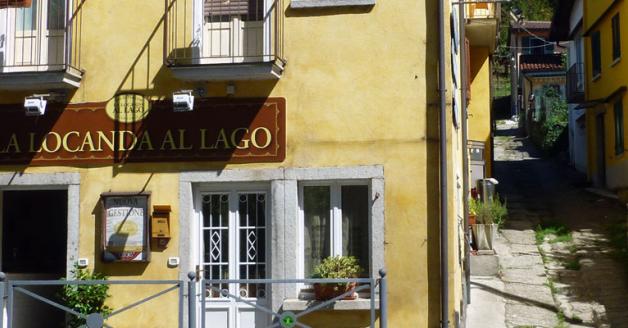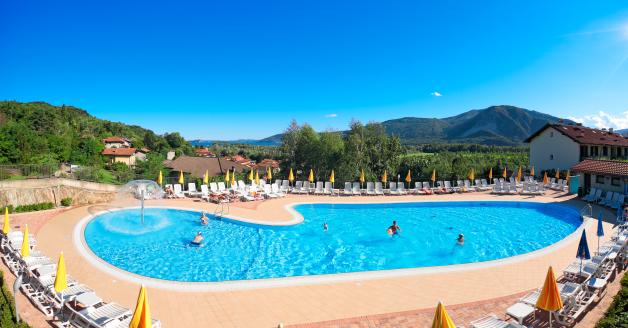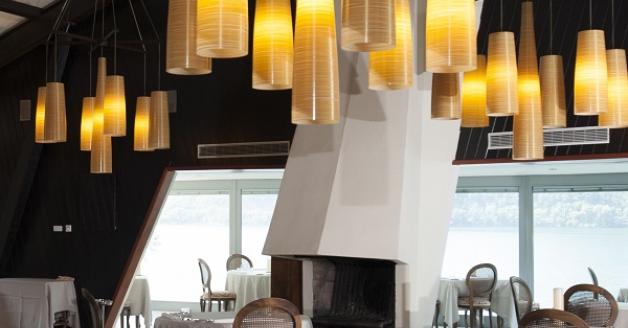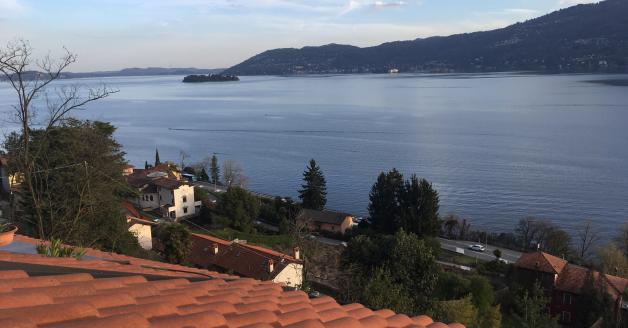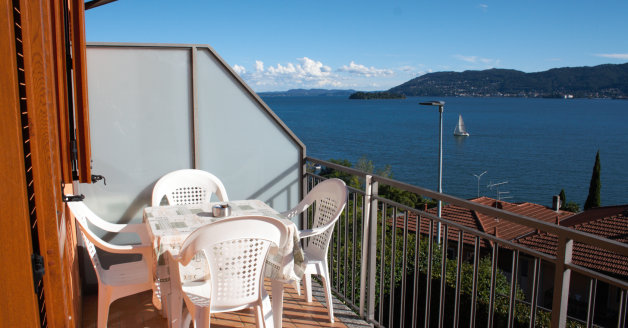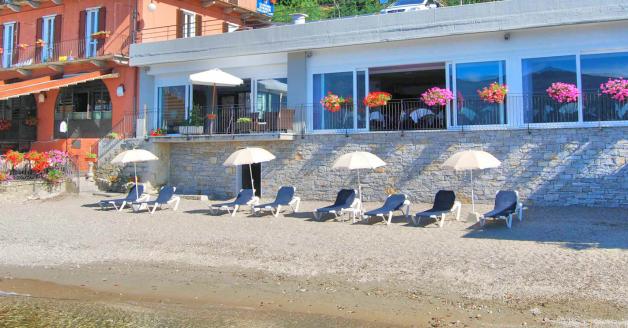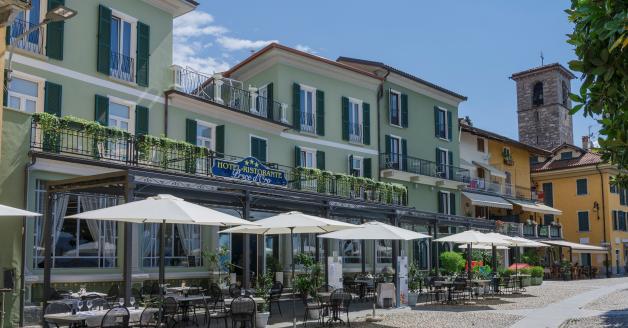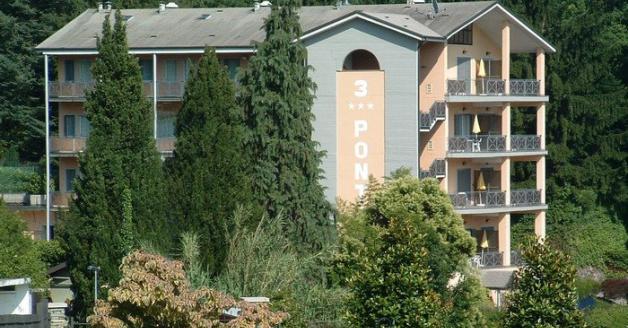Continuing along the lake, we reach Pallanza, one of Lake Maggiore’s most beautiful and famous tourist resorts. The splendid view of the lake and the Borromean Gulf is striking, and equally enticing is its attractive lakefront lined with historic buildings, churches, monuments and luxuriant gardens.
If you’re seeking the perfect place for scenic selfies, or want to capture the idyllic views, there are several great viewpoints along the way starting from the panoramic terrace at the beginning of Viale Tonolli, and then continuing towards the town centre, up to the shore directly in front of Piazza Garibaldi, next to the Imbarcadero departure point for the boats heading to the islands and towns of the Borromean Gulf.
A short distance from the landing stage stands the 19th-century Palazzo di Città, which has a spacious portico formed by 32 pillars in pink Baveno granite; from here, you can walk up the delightful Ruga - a bustling pedestrian street with characteristic porphyry paving stones - to visit Palazzo Viani-Dugnani, since 1990, seat of the Landscape Museum. It houses the Troubetzkoy Gipsoteca (Plaster cast gallery), the sculpture collection, the Pinacoteca - with works by local artists who have become world famous, such as Daniele Ranzoni, Luigi Litta, Federico Ashton and Mario Tozzi - as well as hosting multiple temporary exhibitions.
Towards the end of the lakefront, a graceful statue catches the eye - the Monument to the Fallen of the First World War by the sculptor Paolo Troubetzkoy. It depicts a mother, holding a child in her arms, in the act of placing a flower and, close by, is the more austere and imposing Cadorna Mausoleum, by Marcello Piacentini, designed as a tomb for the famous General Luigi Cadorna, a native of Pallanza.
Slightly further along the lake is Villa Giulia, a famous 19th-century residence built by Bernardino Branca, pharmacist and inventor of the well-known bitter Fernet Branca. The prestigious building, now in municipal ownership for several years, is a venue for exhibitions and conferences, as well large-scale events promoted by the City of Verbania such as Mostre della Camelia (Invernale e Primaverile) Camellia Horticultural shows (Winter and Spring), the Editoria e Giardini book fair and the LetterAltura, travel and adventure literature festival.
On the occasion of these and other events the Villa is open to the public, while the splendid surrounding park - overlooking the lake in front of the Isolino San Giovanni - is a municipal garden that is always accessible to all.
From here, the scenic cycle/pedestrian path continues, with stunning views of the lake panorama and the historic villas that overlook it, such as:
- Villa Rusconi Clerici, a beautifully preserved late-19th century edifice that is still a private residence. The villa faces the lake with its English garden bordering the waters of the Borromean Gulf, offering a splendid view of the islands. Nowadays, Villa Rusconi-Clerici offers its services and spaces for hosting receptions, weddings, conventions and special events but, at the same time, it still retains the second-floor apartments as the owners' summer residence.
- Grand Hotel Majestic, built in 1870 and currently the only Grand Hotel in the city.
- Villa La Scagliola, cited in late-19th century tourist guides as Villa Hasehburner, owes its English-Gothic countenance to the refurbishments carried out by its first owners. In 1880, the Englishman Charles Hasehburner bought a modest old building, annexed to the glass furnaces, from previous owner Antonio Restellini and turned the site into an elegant and luxuriant home. The name La Scagliola derives from the technique used to cover external walls, with the extensive use of scagliola, small flakes of stone, with which the particularly refined and attractive masonry was made.
Especially fascinating are the basements, where the furnace was originally situated: the vaulted brick ceilings, over six meters high, guarantee good insulation from humidity for the building above, which would otherwise be at risk both from the lake and from the nearby stream that the owners categorically refused to divert, allowing it to pass, in full view, directly beneath the villa.
- Villa l'Eremitaggio: built in 1895 by William B. Kaupe, a wealthy American citizen of German origin, a great traveller and art lover. The entire complex is of particular interest due to its bold eclectic and post-romantic style: here, its creator wanted to express his great love for Italian art, re-proposing features from the past and re-using authentic elements from ancient residences.
The garden, which extends for almost half a kilometre overlooking the lake, is a result of the combination of ancient luxuriant architecture and plants: climbing roses, palm trees, thuja, rhododendrons, azaleas, magnolias, various specimens of camphor, red beeches, conifers, cypresses, oleanders and lemons all intertwine with statues, friezes, stone and wrought-iron parapets.
At the end of the cycle/pedestrian route stands Villa Taranto, a world-renowned botanical garden whose construction was initiated in 1931 by the Scottish captain Neil McEacharn. The park extends over circa 20 hectares and has a unique botanical heritage; the species bloom in different seasons throughout the year creating spectacular floral displays: bulbous plants, azaleas and rhododendrons, water flowers, Dahlia Labyrinth and, to close the season, the autumn foliage.
Nearby is another public park, Villa Maioni, with a flat surface area of circa 30,000 sq mt enhanced with some precious tall tree species. The early 20th century villa is now the seat of the Civic Library named after Pietro Ceretti, the philosopher from nearby Intra.
Various species of camellias, typical flowers of the lake area, are gathered together here in a remarkable collection of specimens from all over the world to be admired by the visitors. The villa and park regularly host exhibitions and cultural events.
At the mouth of the San Bernardino stream stands the contemporary Il Maggiore Multifunctional Event Centre, designed by the Spanish architect Arroyo. This striking building is inspired by the shapes of river stones that have been worn smooth by the waters, a clear reference to the surrounding natural environment.
Inside, the building hosts two theatre halls and a large foyer; a short distance away is a well-equipped beach that is very popular with residents and tourists in the summer season.
All’interno l’edificio ospita due sale teatrali e un ampio foyer; a poca distanza si trova una spiaggia attrezzata frequentatissima d’estate da residenti e turisti.

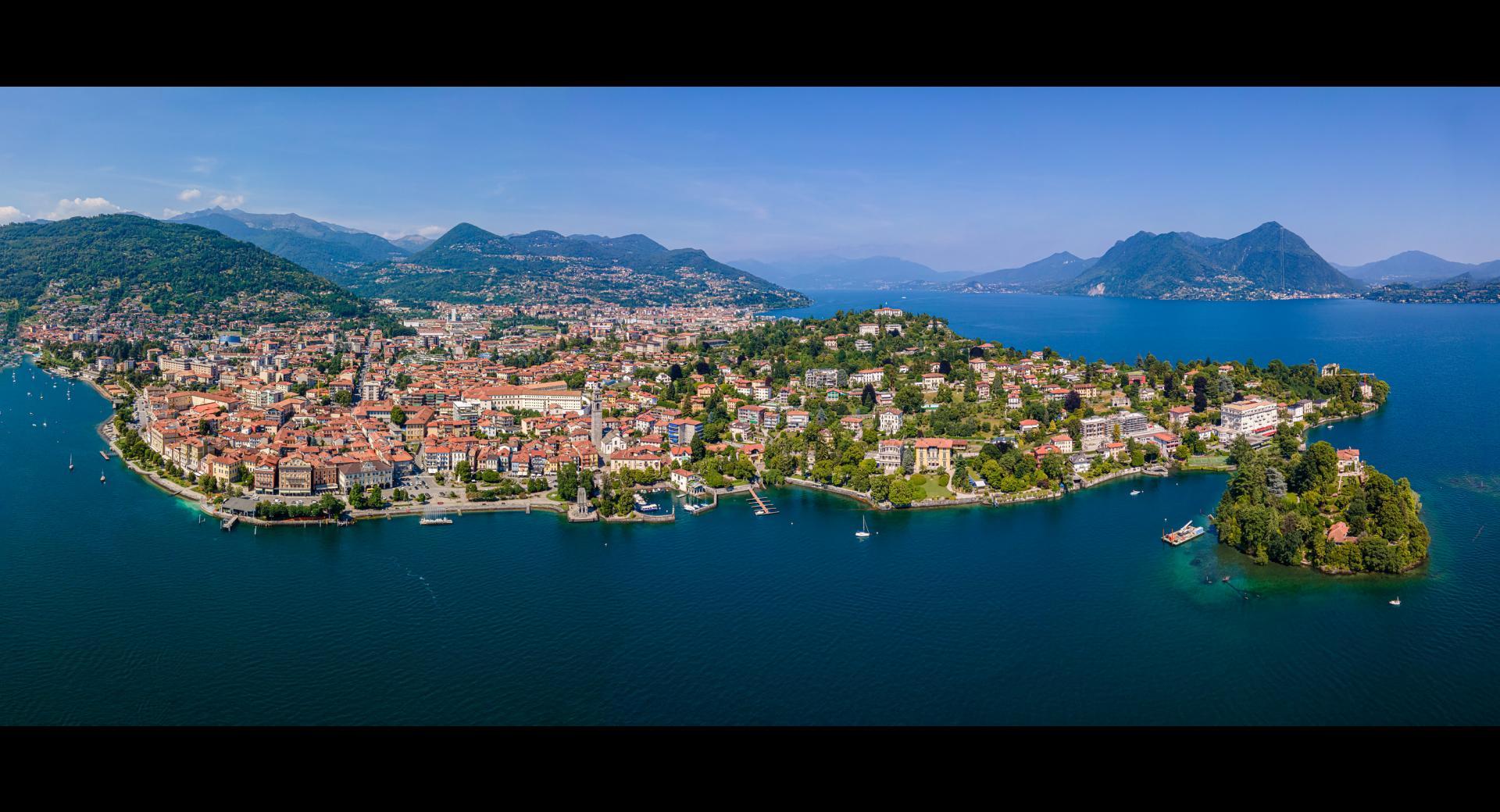
![Ciclabile__foto_Mauro_Gadda[1]](/sites/default/files/styles/gallery_caption/public/itinerario/images/18878/33332/Ciclabile__foto_Mauro_Gadda%5B1%5D.jpg?itok=m89nq-CY)
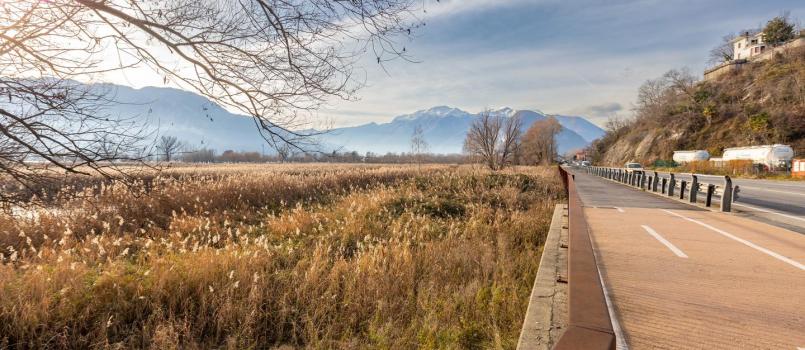
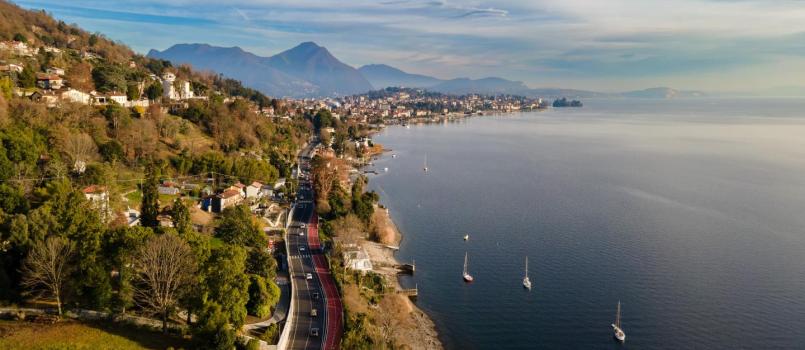
![Paolo_Minioni_Fotografo_Verbania_Copyright_2022-Monumento_Suna_progetto_M.Tozzi[1]](/sites/default/files/styles/gallery_caption/public/itinerario/images/18878/33335/Paolo_Minioni_Fotografo_Verbania_Copyright_2022-Monumento_Suna_progetto_M.Tozzi%5B1%5D.jpg?itok=3jRqr6eq)
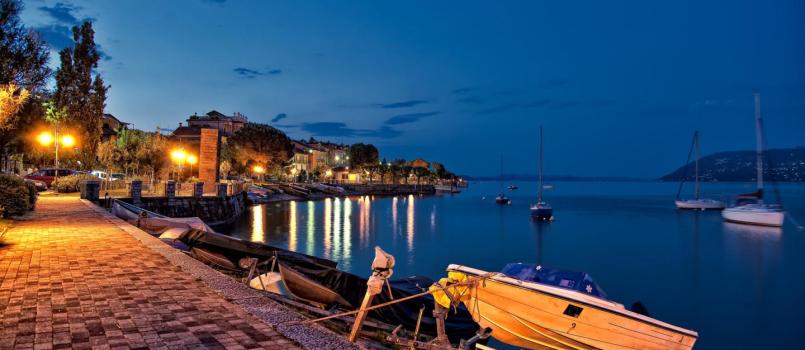
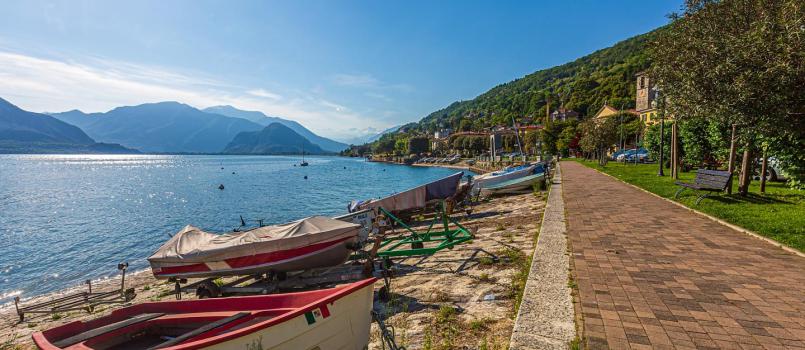
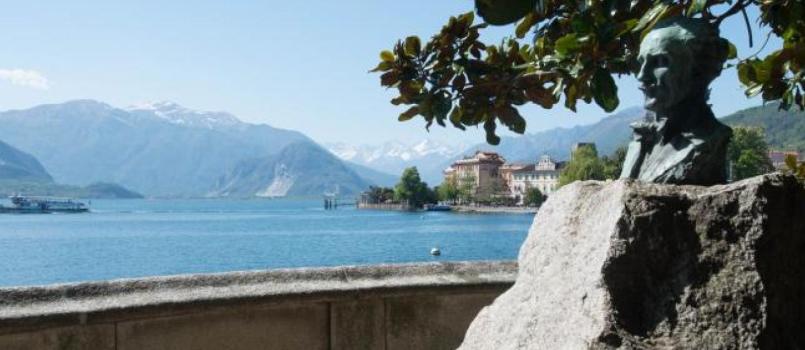

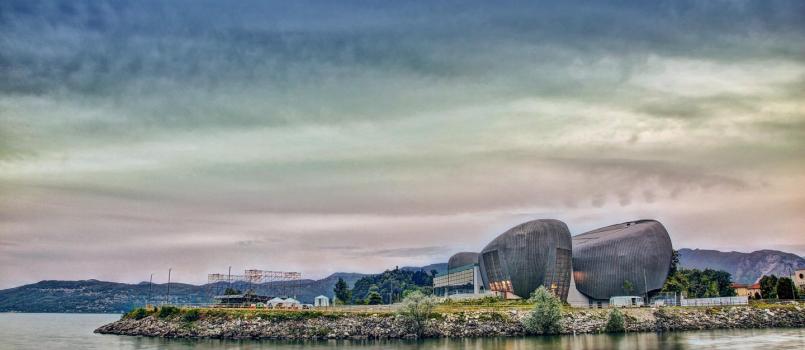
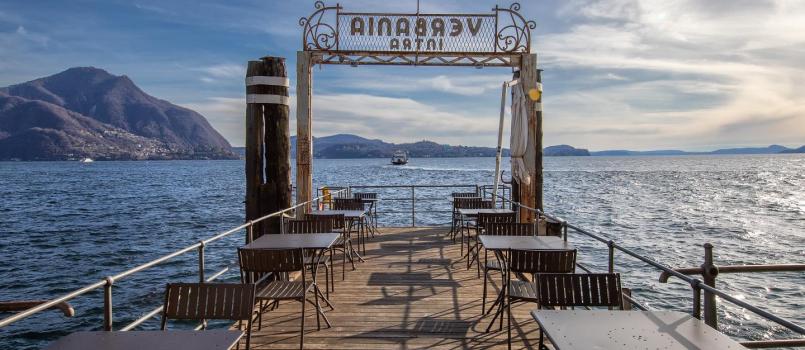
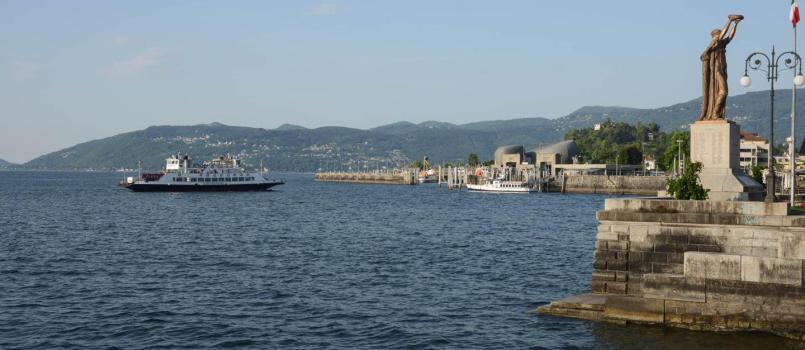
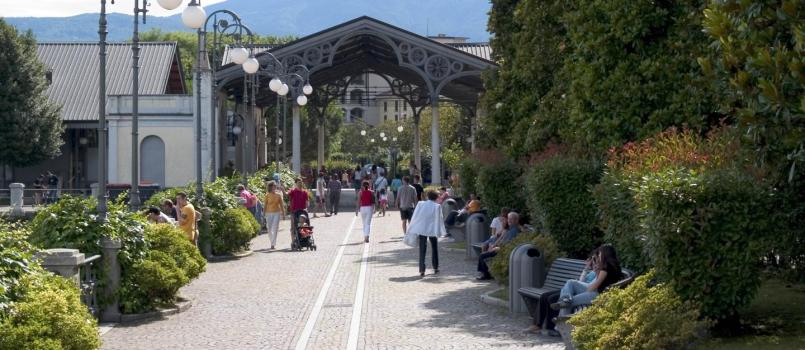
![Ciclabile__foto_Mauro_Gadda[1]](/sites/default/files/styles/gallery_blocchi_redazionali/public/field_blocco_tappe/gallery/187/paragrafi/33422/Ciclabile__foto_Mauro_Gadda%5B1%5D.jpg?itok=eqW49pIl)
![Paolo_Minioni_Fotografo_Verbania_Copyright_2022-Monumento_Suna_progetto_M.Tozzi[1]](/sites/default/files/styles/gallery_blocchi_redazionali/public/field_blocco_tappe/gallery/188/paragrafi/33423/Paolo_Minioni_Fotografo_Verbania_Copyright_2022-Monumento_Suna_progetto_M.Tozzi%5B1%5D.jpg?itok=GFLDcZ0k)
